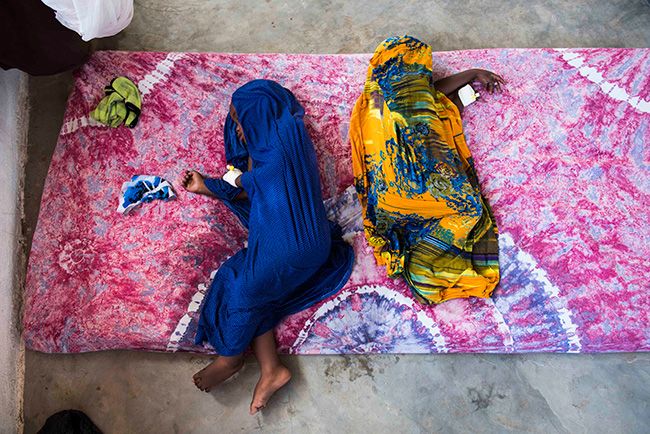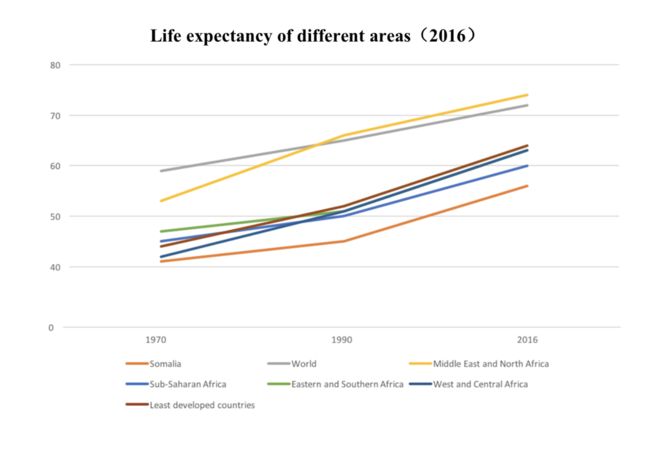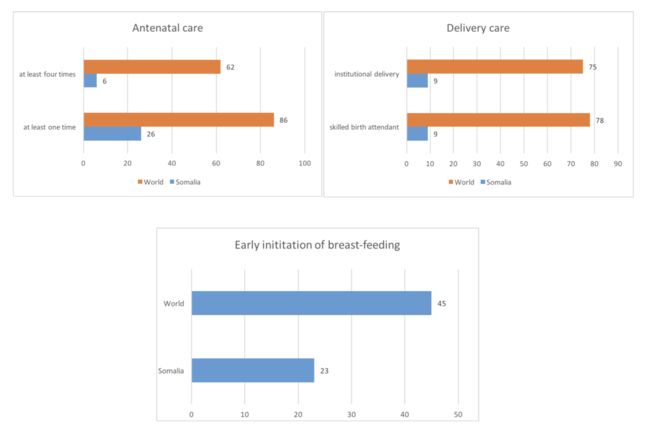"In Somalia, 651 newborns die every day." (2016)
"Somalia has risen from the fourth in 2015 to the first in 2016 among the global rankings of child mortality under the age of five."
In Somalia, the child and neonatal mortality rates are extremely high, accounting for 39% of 609,000 newborn children born in 2016.In addition, the problem of children under-nutrition in Somalia, low rate of disease treatment and the issue of gender-based violence are also significant. According to UNICEF, at least 6.2 million people in Somalia needed humanitarian aid in 2011, of which 4million were children.
The living conditions of children in Somalia are extremely harsh and their education and protection work are urgent.
Somalia, which lays on the Somali peninsula, the easternmost continent of Africa. It is one of the most underdeveloped countries in the world. Its economy is dominated by livestock husbandry, its industrial foundation is weak and its basic education coverage is low in popularization. Due to the year-round high temperature and successive years of natural disasters affected by drought, coupled with prolonged civil war and frequent terrorist attacks,various infrastructure projects in the country have been generally brought to a halt. Existing industry facilities and infrastructure have also been constantly affected.
In 2012, Somalia had a per capita GDP of 348 U.S. dollars,which means that everyday per capita GDP is 0.95 U.S. dollars. But the world poverty standard of per capita GDP is 1.90 dollars everyday, Somalis live in severe poverty.
In fact, the value of life expectancy of Somalia has been growing very slowly. In 1970, the life expectancy of Somalis was 41, and by 2016 their life expectancy only increased to 56. However, the average life expectancy in the world had already reached to 59 in 1970, which is higher than Somalia’s in 2016. Elsewhere in Africa, life expectancy is equally low, not far from Somalia’s.
So what are the realities of child survival in such a country? And what can we do?
1.The key to solve the problem of Children stunting, is to solve the problem of malnutrition
Stunting rate in Somalia (moderate and severe) reaches 25%, slightly above the world average of 24%. However, in Asia and Europe, the rates of stunting are both below 15%. Except for Middle East and North Africa, the rest areas of Africa have higher rates of stunting than the world average of more than 10 percentage points. Not only in Somalia, the whole development of children in Africa is not optimistic.
So, the key to solve the problem of Children stunting, is to solve the problem of malnutrition.
Aisha Mohamed, a health promoter, advises women that they can actually help themselves with a number of issues to prevent stunting on young children: "Good prenatal care, including ensuring that they maintain good nutrition during pregnancy," she said. "Delivery at the medical facility; Breastfeeding exclusively for the first six months; Vaccination for children; Keeping household cleanliness; Washing hands with soap after meals;Keeping cookware clean; Purifying drinking water."
However, in Somalia, women's health awareness for children does not seem to be so strong.
In Somalia, between 2011 and 2016, only 26% of pregnant women had antenatal care experience at least one time and only 6% had at least four times experiences. Shockingly, the world average is respectively 86% and 62%. In the period of 2013-2016, only 9% of pregnant Somali women gave birth baby with help from skilled birth attendants and only 9% gave birth baby at medical institutions between 2011 and 2016, but in the same period, the rates of world average were 78% and 75%. Also, during 2011 to 2016, the rate of early breastfeeding of Somalia babies was only 23% and the world was 45%.
Zeinab Adan, a midwife at a local major maternal and child health center, said that in fact, these simple methods mentioned by Aisha are very practicable even among the poorest families. Despite the unsatisfactory economic situation in Somalia, locals can still help their own to avoid child stunting.
2.Regional infrastructure, pure drinking water and basic sanitation cannot benefit every child
2017, more than 180 million people do not have access to basic drinking water in countries affected by conflict, violence and instability around the world.
In Somalia, the development gap between urban and rural is particularly obvious. If you live in city that means you can basically enjoy pure drinking water and basic sanitation. But children living in counties are not so lucky.
In 2015, the total rate of drinking water use was 40% in Somalia, 70% in urban and 20% in rural. It can be said that people living in countries have basically no access to pure water. The rate of Sanitation facilities use is much lower than that of drinking water, with 16% in total, 28% in urban and 8% in rural.
“Children’s access to safe water and sanitation, especially in conflicts and emergencies, is a right, not a privilege” said Sanjay Wijesekera, UNICEF’s global chief of water, sanitation and hygiene.” In countries beset by violence, displacement, conflict and instability, children’s most basic means of survival – water – must be a priority.”
However, to solve these two problems, the key lies in whether the country is stable. Basic projects will be difficult to start, and drinking water and sanitation facilities is hard to be fully equipped under unstable condition.
3.Child protection measures are not in place, the problem of gender-basedviolence is serious, and girls are the main victim
Child labor in Somalia is very common, with nearly half of children have to work. In 2016, the population of Somalia under the age of 18 was 7,642,000, which represented there are about 3,821,000children have to work.
Besides, women and girls often need to go out for firewood as they do not have stoves. They are often attacked and raped when they go out. Fortunately, UNICEF and other related organizations have already begun to provide teachers with basic emotional support training to ensure that schools can help prevent and respond to sexual violence and abuse against children.
At the same time, UNICEF also provide senergy-saving stoves as a proactive prevention mechanism for gender-based violence. These stoves reduce the number of women and girls who go out for firewood. Addressing gender-based violence and child protection issues requires the support of the global community.
The health condition of children in Somalia and the local protection are not optimistic. However, there are many thingsthat we can do. Such as sending volunteers and MSF to local for raising people's awareness of hygiene. We also can directly change their living environment with material assistance.








